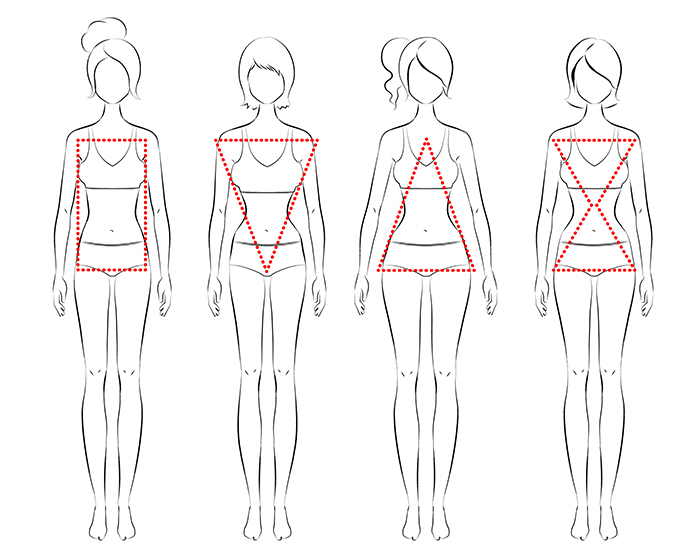In Population Health
Follow this topic
Bookmark
Record learning outcomes
It's not just about how much extra weight is carried, but where it is that has a damaging effect on health. Here is what pharmacy staff need to know so they can help educate customers and motivate them to lose weight sensibly

In the UK 26 per cent of men and 24 per cent of women are obese, and 41 per cent of men and 33 per cent of women are overweight. Treating obesity and its consequences costs the NHS £5.1 billion each year. A worrying trend is a "normalisation" of being overweight or obese. A poll conducted for the National Obesity Forum last year found only 6 per cent of Britons consider themselves obese and almost half think they are a healthy weight.
Central obesity concern
New research has found that it's not just being overweight that is so damaging to health, but where that excess fat is carried on the body. A new study by the Mayo Clinic in the US and the University of Ottawa in Canada (Annals of Internal Medicine), has found yet more proof that carrying excess weight around the middle dramatically increases mortality. Even adults with a normal BMI, but who have a large belly, have a much-increased rate of mortality, and this was more significant for men.
"All fat is metabolically active [ie increases insulin resistance, risk of heart disease and cancer], but visceral [central] fat is infinitely more active than subcutaneous fat," says Tam Fry, spokesperson at the National Obesity Forum.
"This is why people shouldn't worry too much about bingo wings or a double chin because these are mainly cosmetic. However, a big tummy is a concern, as evidence suggests a direct link between waist circumference and visceral fat. This means more dangerous fat in and around the internal organs, which increases the risk of comorbidity."
You can advise customers to work out their risk by measuring their waist-hip ratio (WHR). To do this, measure their hips and waist, then divide the waist measurement by the hip measurement. A ratio of 1:0 or more in men or 0:85 or more in women means too much weight around the middle. For women, the ideal waist measurement is less than 80cm (32in); high is 80-88cm (32- 35in), and very high is 88cm+ (35in). For men, ideal is less than 94cm (37in); high is 94-102cm (37-40in) and very high is 102cm+ (40in).
The study found a man of normal weight but with a high WHR was 87 per cent more likely to die prematurely than a man with no central obesity. At age 50, a man with a normal BMI and normal WHR has a 5.7 per cent risk of dying in the next 10 years, but that is increased to 10.3 per cent for men with a normal BMI but a high WHR. "Community pharmacists see their customers' frequently, so are well placed to refer customers to a local weight loss clinic or offer their own service," says Mr Fry.
"If they do offer a service, it's vital they are all well trained as you can do a lot of damage if you don't offer the correct advice." A new study, which examined data from annual English Health surveys from 1999 to 2012, found that a brisk, 30-minute walk five days a week was the most effective form of exercise for keeping weight down. The researchers also found that regular, brisk walking significantly reduced waist measurement, too, especially for women.
Educate your customers
Mr Fry stresses the importance of educating customers about the health dangers of being overweight or obese. "People, in general, aren't well informed about the comorbidities of obesity," he says. "They don't know about type 2 diabetes risk if you're overweight and the risk of complications from that." He advises having a set of guidelines you can refer to or learn and then pass on to your customers. "You need to be able to strike up conversations about weight in a sensitive way."
At Wainwright's Pharmacy in Bishopstoke, Hampshire, pharmacist Sultan "Sid Dajani says: Evidence is emerging that we can make a difference around public health services, including weight management because we have a strong foundation in medicinal as well as nonpharmacological expertise. We have a role in identifying groups of people at special risk, people on low incomes, elderly people with arthritis, and Asian people who are at particular risk of diabetes and cardiovascular disease."
At Numark, service development manager Laura Reed, says: "A growing number of pharmacists are getting involved in weight management programmes and this sits very well with pharmacy's broader public health role. The pharmacy provides the environment where advice is available on the dos and don'ts of losing weight but also advice, guidance and support in managing the long-term effects of being overweight. The pharmacy provides the opportunity to carry out the weight and other measurements in the privacy of a consulting room."
Weight loss services
At Wainwright's Pharmacy, Mr Dajani has provided a range of weight loss services to his customers over the years.
"I've provided services from Lipotrim to exercise prescriptions and even a voucher scheme with local greengrocers to allow customers on low incomes to get 10 per cent off their fruit and veg. But finally, I've settled on a weight loss programme allowing access to orlistat via a private patient group direction. It works better than anything else I've tried," he says.
"A healthy diet and regular exercise should ideally be started before treatment with orlistat and continue afterwards. It's open to adults with a BMI of 30+ or 28+ in high-risk patients. I use a motivational questionnaire to assess whether a patient is ready to lose weight. Many have been living with weight issues for years, so I try to add in a small, manageable change each month. I use their own motivational reasons because I know from the smoking cessation services I provide how valuable that is."
The scheme showed an average weight loss of 11.8 per cent in the first six months and he's helped more than 400 patients to date. Only 3 per cent discontinued. "Although the achievement of a BMI within the 20 to 25 range is beneficial, even a 10 per cent weight loss helps in terms of disease reduction," he says. "So I avoid setting targets because they can easily be set up to fail and this affects self-esteem."
St Clears Pharmacy in St Clears, Wales, offers the Alphega weight loss service. Counter assistant Julie Glanville looks after it. "Customers can choose a time that's convenient for them to come in and we're much more flexible than, say, a weight loss group," she says. "We offer one-to-one sessions so they have privacy and the service can be tailored to meet their needs."
The pharmacy charges £25 for the six-month Alphega weight loss programme. Customers have weekly 10-minute sessions, as well as longer initial and final sessions. In the first session, Ms Glanville measures weight, BMI and body fat, takes blood pressure and checks cholesterol and glucose levels. Any issues are referred to their GP. The assessment is repeated after six months.
"For every 7lb a customer loses, we offer a reward," she says. "At weekly sessions we weigh them, talk about the weight result and how they've done that week. I give them a target of weight to lose every four weeks. They keep a food diary each week and bring it in to discuss in the session. Some prefer to count calories, others prefer to do it through healthy eating. I have about 15 regular customers using the service, but this should increase in January. We get people coming in after being recommended by friends, or they've seen our advert in the shop window or GP surgery."
Rowlands Pharmacy group offers a range of weight management options for customers. "As standard practice, all our staff are trained to provide healthy living advice including advice on healthy eating and exercise to support weight management," says clinical pharmacist Sarah Buchan.
"We also offer a free drop-in weight management service, where customers can have a private consultation with one of our trained members of staff who will calculate their BMI and take waist measurements. These are recorded for the patient to track their progress over a number of weeks. The service can be used as standalone support to patients who are following their own healthy-living plan or alongside one of our meal replacement or weight loss aids."
Also in the category, Zotrim has been relaunched with an improved formulation and new branding. Caffeine levels have been slightly increased to make the product more effective, says Dr Trevor Jarman at Nature's Remedies. The company has also recently launched Zotrim Plus, which comes in a drink formulation to help reduce hunger cravings and calories consumed.
Target reduction in sugar intake
Our sugar consumption is a major factor in the obesity epidemic. The Scientific Advisory Committee on Nutrition (SACN) has recommended that our average maximum intake should be halved and not exceed 5 per cent of total dietary energy.
Currently, sugar intake accounts for 12 to 15 per cent of energy consumed. SACN also recommends minimising consumption of sugary drinks. It estimates that by meeting these guidelines, within 10 years we could save the NHS £500 million a year. The SACN guidelines have been accepted by the government.
A sugar tax of 20 per cent has been proposed to discourage consumers from buying sugary foods and drinks. "I think a tax will help, but only if it's high enough," says Tam Fry, who is a member of the expert advisory team, Action on Sugar. "It will help reduce consumption of sugary drinks and this will reduce weight gain. However, the proposed tax of 20 per cent isn't high enough. If it were 50 per cent people really would consider buying alternatives. It's important that pharmacies stock alternatives to sugary drinks."
In its report Sugar Reduction: the Evidence for Action (October 2015), Public Health England outlines eight measures it believes will be effective in reducing sugar intake:
- Reduce and rebalance the number and type of price promotions in all retail outlets
- Significantly reduce opportunities to market and advertise high-sugar food and drink products across all media
- Set a clear definition for high-sugar foods
- Introduction of a broad, structured programme of gradual sugar reduction in everyday food and drink, combined with reduced portion size
- A price increase of 10 to 20 per cent on high-sugar products through a tax
- Adopt, implement and monitor government buying standards for food and catering services across the public sector to ensure the provision of healthier food and drink in hospitals, leisure centres, etc
- Ensure accredited training in diet and health is delivered to all those who have an opportunity to influence food choices in catering/fitness/leisure sectors
- Raise awareness of concerns regarding sugar levels in diet to public and health professionals, and encourage action to reduce intake through practical steps.
Comment
 Vishal Mahru, VM Pharmacy Services, Leicester "The main way we approach the issue is with specifically tailored lifestyle advice, helping the customer to understand how they can help themselves, so I've been on a few courses recently to further my knowledge. Some people understand what they can do to lose weight in terms of portion sizes and sugar intake, but others don't have any understanding at all. We also have a scheme called 'Be Active, Be Healthy' in our area that we can direct people to. This involves personal trainers and instructors who have a really good background in weight management and we're lucky to have a team of people who can help. A lack of products to offer in this category is somewhat frustrating when you want to help. Orlistat is popular, although we see more of that on prescription now."
Vishal Mahru, VM Pharmacy Services, Leicester "The main way we approach the issue is with specifically tailored lifestyle advice, helping the customer to understand how they can help themselves, so I've been on a few courses recently to further my knowledge. Some people understand what they can do to lose weight in terms of portion sizes and sugar intake, but others don't have any understanding at all. We also have a scheme called 'Be Active, Be Healthy' in our area that we can direct people to. This involves personal trainers and instructors who have a really good background in weight management and we're lucky to have a team of people who can help. A lack of products to offer in this category is somewhat frustrating when you want to help. Orlistat is popular, although we see more of that on prescription now."
 Rena Dadra, Village Pharmacy, Harlington At the moment I'd say this is our biggest mover. People seem to have become more health-conscious and want to look after themselves more. And we've seen an increase in men asking us for advice, which is very good to see because they are usually more reluctant to talk to health professionals. We have a few weight loss programmes and we've just introduced Lipotrim as well. We were a pilot pharmacy for the Hillingdon weight loss programme, which went well. People saw a pharmacist on a weekly basis to try to change their attitudes towards food. When customers come in, even once they've finished the programme, to say, 'Look, Rena, I've lost another kilogram,' it is just fantastic. The once-a-week meet-up works so well, and keeps people motivated."
Rena Dadra, Village Pharmacy, Harlington At the moment I'd say this is our biggest mover. People seem to have become more health-conscious and want to look after themselves more. And we've seen an increase in men asking us for advice, which is very good to see because they are usually more reluctant to talk to health professionals. We have a few weight loss programmes and we've just introduced Lipotrim as well. We were a pilot pharmacy for the Hillingdon weight loss programme, which went well. People saw a pharmacist on a weekly basis to try to change their attitudes towards food. When customers come in, even once they've finished the programme, to say, 'Look, Rena, I've lost another kilogram,' it is just fantastic. The once-a-week meet-up works so well, and keeps people motivated."
 Shaheen Bhatia, P&S Chemist, Ilford "You can't get away from news reports about childhood obesity and 50 to 60 per cent of us being overweight or obese. We've got to teach the parents and educate the kids about how they can live healthier lives. People can go to Holland & Barrett for diet tablets and supplements, but where pharmacy stands apart is with the weight loss programmes that we run, which give people the support they need to keep going. We have links to personal trainers whom people can go and see for an exercise plan. We try to get as much conversation in about exercise as possible. That's something that really helps."
Shaheen Bhatia, P&S Chemist, Ilford "You can't get away from news reports about childhood obesity and 50 to 60 per cent of us being overweight or obese. We've got to teach the parents and educate the kids about how they can live healthier lives. People can go to Holland & Barrett for diet tablets and supplements, but where pharmacy stands apart is with the weight loss programmes that we run, which give people the support they need to keep going. We have links to personal trainers whom people can go and see for an exercise plan. We try to get as much conversation in about exercise as possible. That's something that really helps."

